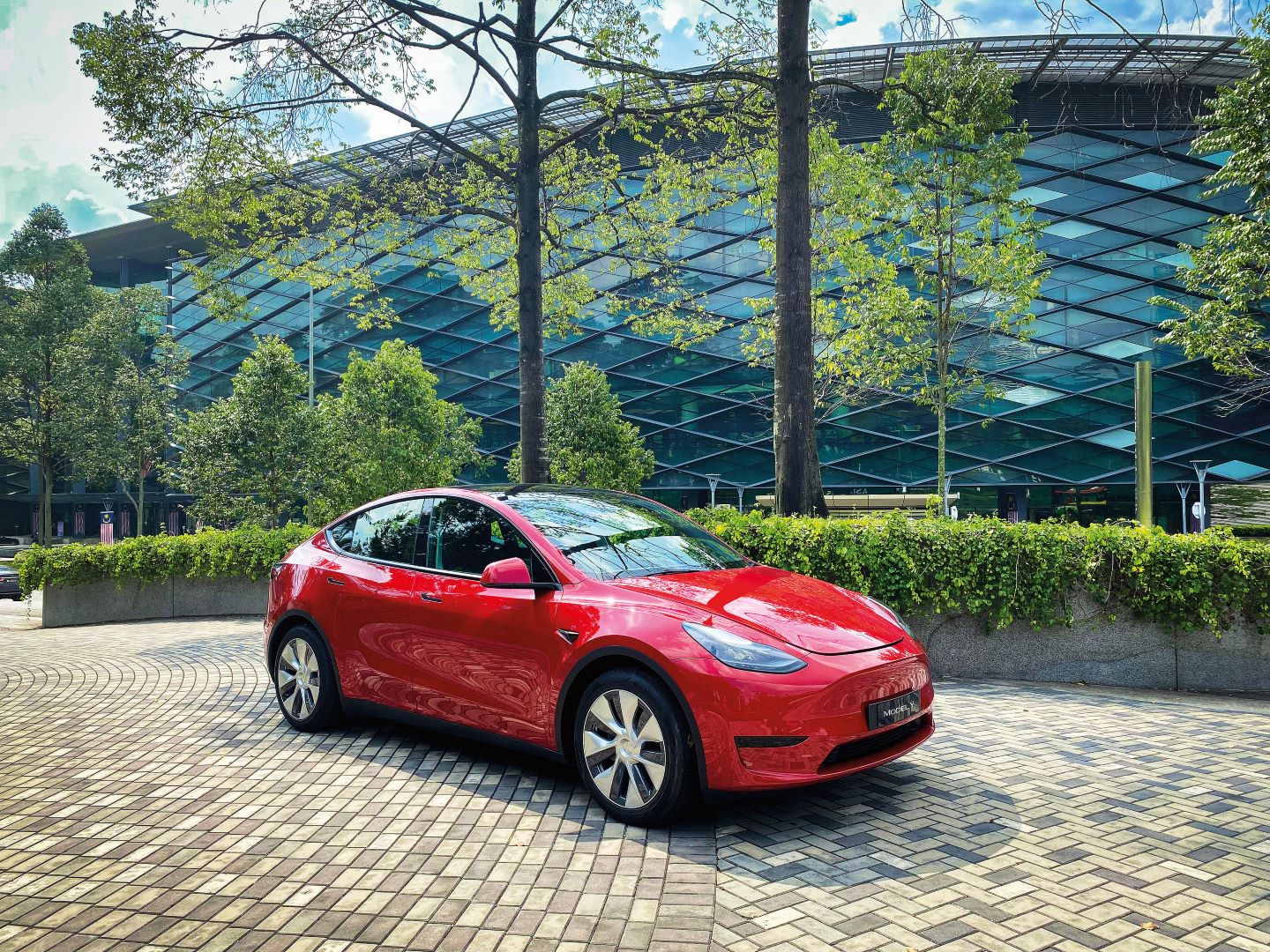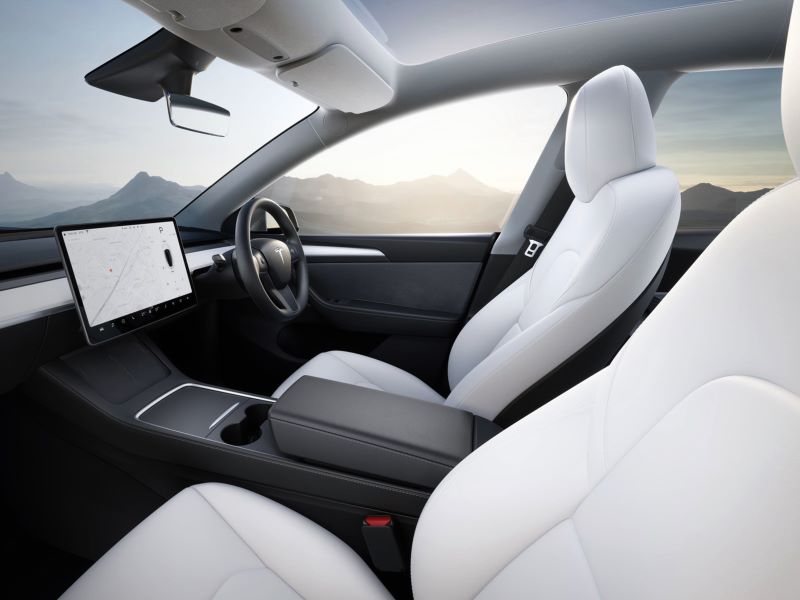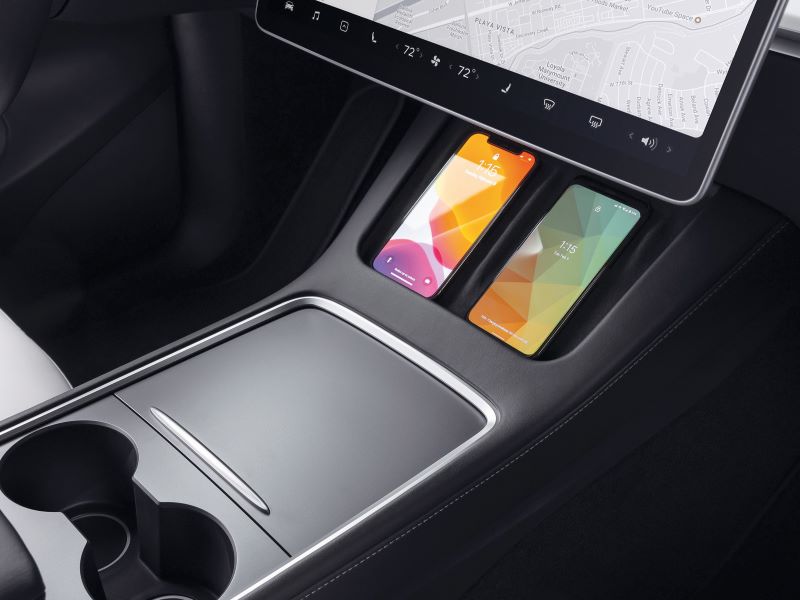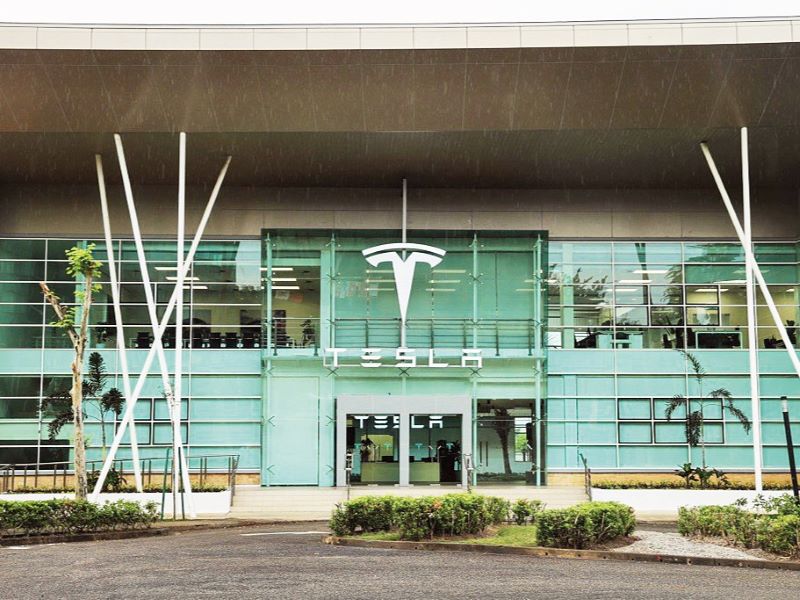
Stand out in this bright red shade for an additional RM10,000 (Photo: Kong Wai Yeng/The Edge)
An electrified age is revving up the auto industry — and by extension, jobs, the technology landscape and geopolitical influence. However, while most car makers see an opportunity to snag a slice of a market that has turned decisively in the direction of battery power, a traffic snarl of upstarts is still trying to follow in Elon Musk’s tyre tracks. Such is the gravitational pull of the Tesla nameplate, which courts people to fall for its vision of not being a car company, but a disruptive tech firm that develops electric vehicles (EVs) as it would be the next breakthrough software in Silicon Valley.
Just how influential is the man who dreams of Mars as he bestrides Earth? When Tesla Sdn Bhd, the local arm of the American mothership based in Austin,Texas, announced the opening of a local head office in June, thousands of jobseekers flocked to Cyberjaya for a chance to work for the maverick billionaire CEO who oversees everything from global sales strategy to the look of retractable car door handles. Enthusiasts, even without test-driving, were already jostling to place a non-refundable RM1,000 deposit when the world’s best-selling Model Y (dethroning the venerable Toyota Corolla) was paraded at Pavilion Kuala Lumpur a month later.
Malaysians, including our government eager to “green the grid”, had every reason to be excited. Tesla’s entry will lend the country a certain economic heft as the company, still unapologetically gunning for growth, is looking to invest significantly in setting up a vast network of fast- and regular-charging stations at strategic locations nationwide. This would resolve the niggling dearth of charging infrastructure, thereby encouraging a higher adoption rate of EVs. But chiefly, it is also putting a scare into the legacy German marques and deep-pocketed Chinese by potentially outselling some of their most popular models. The business world has a felicitous term to describe this competitive threat: Catfish effect — you only need to toss an aggressive fish into a pool so that established denizens will swim harder.
tesla-interior.jpg

Although Tesla has not launched a new car since 2020, while other auto makers charged ahead with revolutionary (and sometimes questionable) designs, customers’ appetite remained voracious for the poster boy of EV that made defiance of convention its badge of honour. Of course, no matter how enraptured one is by Musk, who is as much a trailblazer as a chaotic agent that waded into controversies and ignited a volley of criticism, there are still exacting boxes to be checked before making a purchase: power, eco-benefits, specs, handling and so on. It’s just that Model Y, despite its outmoded design from 2019, ticks them all off, and then some. And because this is Tesla, it also shows you can build great cars and name each model, S-3-X-Y, such that the line-up spells sexy.
Our Tesla a-ha moment came in the parking lot, when a “key” the shape of a credit card unlocked the rear-wheel drive model with a tap, before we gained entry into a sparse interior anchored by a 15in touchscreen instantly familiar to anyone who has used a tablet. The do-it-all nerve centre, floating in a seemingly barren dash, controls nearly everything, from the air vents and mirrors to the glove compartment. Entertainment functions on it, including the embedded Netflix and YouTube apps and video games, are perfect for killing time while you juice up at public charging stations, but drivers are locked out of these distractions when the car is on the move.
It is only when we clambered into the back that Tesla truly demonstrated itself as a commodious five-seater, thanks to a flat floor, 117-litre “frunk” (front trunk), as well as a generous 854-litre cargo space and underfloor storage that can altogether fit at least three checked suitcases and two carry-ons. Stacked against rivals of the Three-Pointed Star with showboating gadgetry or swooping aerodynamics of their piston-powered forebears, the Model Y may not be the pick of the litter. But its lofty stance — a high-waisted iteration of the Model 3 sedan with a 70% carryover of the same parts — easily towered over competitors in its category with heightened headspace and airiness amplified by a tinted, UV-protected all-glass roof.
model_y_charging.jpg

The Model Y, though by no means a default choice, is all electric but does it drive fantastic? Despite a firm suspension that gives it liveliness, the mid-size SUV, with a 57.5kWh battery pack that provides 455km of range, dulled the sharp edge of other EV handling, making rides rougher when deflecting imperfections on the road. Yet, put some spring in its steps and it can lunge off the line from 0 to 100kph in 6.9 seconds, onward to a limited top speed of 217kph. Even for an entry-level variant, the burst of acceleration came off well-mannered, without making you feel you were launched from the proverbial aircraft carrier or sling-shot out of corners when exiting a roundabout.
Alas, we are still not one-pedal converts. But for the unfamiliar, the Creep setting simulates the behaviour of an automatic transmission that will ease you into its well-calibrated re-gen brake system. Though a tad touchy, it helped when darting and carving through slower traffic with the Comfort mode and instantly recouped when barrelling down a few curvaceous bends around Bukit Tunku, KL. The low centre of gravity was palpably felt at the corners.
The prospect of the EV has always headed towards autonomous driving but getting there is not without any speed bumps. Kitted with the standard Autonomous Advanced Driver Assistance system, the car is skilled at steering itself, but when lane markings disappeared or were significantly faint, the autopilot system might disengage abruptly and a human driver would be wise to keep full control. We almost wished this agile family hauler that wafts with the serenity of a sailboat would roar up a little ruckus on a highway but this sanctuary of a car was reverentially hushed, punctuated only by the hiss of the tyres or patter of raindrops. At this point, do we light a candle?
first_tesla_centre_in_malaysia2.jpg

Tesla does not brandish all that spiel about safety or emotional intelligence but it gives you just enough Easter eggs and credentials, including a seamless ecosystem and built-in app to access its Supercharger network, that will nudge those ready to go electric. The EV revolution in Malaysia is not on its way — it has broken ground, if the all-in-one Tesla Centre in Cyberjaya is any indication. The two-storey building launched earlier this month is being developed in two phases: The first consists of a retail area to showcase the latest Tesla models and the second will see it roll out more facilities for service, delivery (Model 3 Highland will reach customers later this year) and after-sales support.
Whether Tesla’s presence will boost the nation’s potential as a regional EV production hub on a scale the government envisions remains to be seen but it could attract further investments in the sector, while aligning with the country’s New Energy Transition Roadmap (NETR) to accelerate investments in grid infrastructure. If investing in Tesla is a bet on its genius for turning future into dollars, it may not be a bad idea to recharge the local car industry after all.
Tesla Model Y is priced from RM199,999 and expected delivery is early 2024. Make a reservation here.
This article first appeared on Oct 16, 2023 in The Edge Malaysia.


